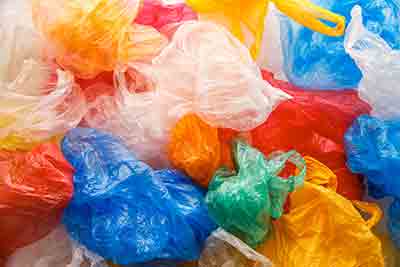The Blog
Plastic Recycling: What’s Really Happening?
April 9, 2025

Recycling plastic is a great way to reduce environmental impact. Plastic is one of the most commonly used materials, yet when it ends up in the landfill, it can take up to 500 years to break down, never truly biodegrading. Some plastics are recyclable in your curbside bin, and the other, harder-to-recycle plastics can be dropped off at Recycle Utah to be recycled.
Recyclable plastics will have a recycling symbol and a number printed on them. In general, plastics #1 and #2 are always recyclable in your curbside bin. If the plastic is firm or hard, such as a plastic water bottle or detergent bottle, it can typically go in your curbside bin. However,soft plastics you can crinkle in your hand need to be taken to Recycle Utah or another certified drop-off center, such as Smith’s or Walmart. Soft plastics include plastic bags, plastic wrap, Ziploc bags, etc. Soft plastics are never allowed in curbside bins because they jam the machine and slow down the recycling process. The best solution for plastic bags is to reduce use or avoid buying them.
Most of the time, if the symbol on your packaging says it is recyclable, it is. The most frequent exception to this rule is non-refrigerated Tetra Paks. Shelf-stable liquids, such as alternative milk and broth, packaged in a Tetra Pak is not recyclable in the state of Utah. These items can cause curbside bins to be contaminated and landfilled, so be very careful not to put them in your recycling bins. Refrigerated milk cartons can be included in your curbside recycling bin in
Summit County, as they are lined with plastic instead of metal. So, what happens to plastics after you recycle them? Plastics in your curbside bin get sent to one of several sorting facilities in Utah. Plastics are then sorted by type, shredded, and melted into pellets to be remade into new plastic materials. The process is far less environmentally harmful than creating virgin plastics. Supporting products with reduced or non-plastic packaging, or being able to reuse products as much as possible before recycling them, is a great way to mitigate the problem of plastic pollution.
By Mia Moore